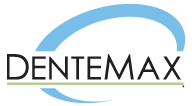Working in a dental office means you are not only well-versed in oral health, but also the nuances of dental insurance. But just because your patients may carry an insurance card doesn’t mean they completely understand all it entails.
Consider this: a 2017 survey uncovered some significant knowledge gaps in Americans’ understanding of how medical insurance works. Almost two-thirds of those surveyed knew what “health plan premium” and “health plan deductible" were, but less than half understood “out-of-pocket maximum” and “co-insurance.” Only 9% of those surveyed showed an understanding of all four terms. What’s more, 36% said they thought visiting an in-network provider would increase their care costs.
This means you may need to break things down for patients more when reviewing their dental bill or explanation of benefits. This especially goes for Millennial patients, who showed a bigger gap in insurance literacy in a second survey by PolicyGenius. When asked to define four basic insurance terms ("deductible, co-insurance, co-pay, and out-of-pocket maximum."), 65% of Millennials surveyed claimed they could correctly define all of them, but only 36% actually did.
That’s why we developed this patient-friendly guide to basic dental insurance terms. This primer will help you have clear and more effective conversations with patients about their dental coverage and bill, which is a vital part of growing loyalty and retention. In fact, the American Association of Dental Office Management ties the patient experience directly to how well-versed you are in their dental insurance.
So, let’s help your patients break it down.
Basic dental insurance terms
Annual maximum: This is the most a dental plan will pay toward the cost of your dental services in a year. After the plan pays this amount, you must pay for the total costs of your dental services for the remainder of the year. However, they will be at a discounted cost if your dentist is in-network.
Balance billing: This balance is the difference between the provider’s charge and the allowed amount of coverage by the dental plan. You will see this when you visit an out-of-network provider.
Benefits: Simply put, this is the amount your insurer owes on the cost of covered dental services.
Claim: A claim is a request for payment under a dental benefit plan. It includes the services performed, the dates of those services and a breakdown of costs. These are filed by the dentist’s office.
Co-insurance: This your share of the cost of dental services. It is the percentage of costs you pay after you have met your deductible.
Co-pay: This is a set rate you pay for prescriptions, medical visits and other types of care.
Coordination of Benefits (COB): If you have more than one insurance policy, a coordination of benefits will match up payments so charges are not exceeded. For example, if a child’s dental care is covered by both parents, one insurance is considered primary and will be used for payment first. The second plan will kick in for any balance remaining, if there is one.
Deductible: The set amount you pay for medical services and prescriptions before your dental plan begins to pay. For example, when you hear the term “high-deductible plan” during open enrollment, that means the patient pays a higher set amount before insurance kicks in.
Explanation of Benefits (EOB): After a claim is submitted for your dental services, you will receive an explanation of how your benefits kicked in to cover for them. You will also see an outstanding balance (if any) and instructions on how to dispute a decision.
In-network: As the name implies, this term applies to dental care providers (dentists, clinics, health centers, etc.) that contract to provide services on your dental plan. In most cases, you will pay less out of your own pocket when you visit an in-network provider.
Out-of-network: An out-of-network is not contracted to provide care under your dental plan. As a result, you will usually pay more out of your own pocket for care.
Out-of-pocket costs: This is the amount members must pay for their dental care themselves. This considers the balance charged by the provider and the dental plan coverage for the services.
Out-of-pocket maximum: This is the opposite of an annual maximum. In this case, out-of-pocket maximum refers to most a dental plan requires members to pay in a year. Deductibles, co-payments and co-insurance all count toward this amount. Once this dollar amount is hit, dental coverage will pick up all additional costs.
Premium: Premium is the amount you pay to a dental insurance company to receive coverage. This is typically paid in monthly installments. If your employer is providing coverage, they may pay a portion of the premium and the rest may be paid by you through a payroll deduction.
Procedure code: Also called Current Dental Terminology (CDT) codes, these are a set of dental codes that cover various dental procedures. These are created by the American Dental Association and used universally across the United States. You may see these on a bill or explanation of benefits.
Provider: A general term for dentists and other dental care professionals licensed or certified to provide dental services in their state and is performing services within the scope of that accreditation.
Resource: For a complete listing of helpful dental insurance and dental care terms, check out this guide from the National Association of Dental Plans (NADP).

